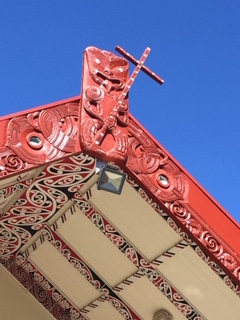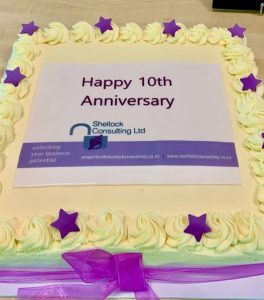On 6th February 1840 the Treaty of Waitangi was first signed at Waitangi in the Bay of Islands, New Zealand.
Over the past few days high profile politicians and the ordinary person in the street have been asked to summarise what was in Articles 1, 2 or 3. Umm, that’s hard one on the spot. So here is a quick summary for you, just in case you get confronted with a camera and microphone, or your children asking about it.
The Treaty is an agreement made between the British Crown and about 540 Māori rangatira (chiefs). Approximately 40 chiefs signed on the 6th February, with the documents (or a copy of the documents) then travelling around parts of the country where approximately 500 more signed by September 1840. Some chiefs signed while remaining uncertain as to the benefits and implications, others refused or had no chance to sign. Some Chiefs were women. All but 39 chiefs who signed, only signed the Māori text. The Colonial Office in England subsequently declared that the Treaty also applied to Māori tribes whose chiefs had not signed, and British sovereignty over New Zealand was proclaimed on 21 May 1840.
The Treaty was drafted by Lieutenant-Governor William Hobson with assistance by others including James Busby. It was prepared in a short period of time with the intention of securing New Zealand for the British Crown by securing a treaty with the various tribes (Iwi) who were in possession of the land. Missionary Henry Williams and his son translated the English draft into Māori overnight on the 4th February. The Māori text was then debated for a day and a night before it was first signed on 6th February 1840. Note that debate and discussion are important to Māori, so when the draft treaty was debated the Chiefs placed significant reliance on the words and assurances given to them as to its meaning and effect. Whereas, the English placed greater reliance on the final written document, and in this case the English version. Henry Williams was fluent in Māori but as is often the case there may be no immediately identical word in another language and replacement or similar words were used, with the intent that they had the same meaning.
In the English text, Māori cede the sovereignty of New Zealand to Britain; Māori give the Crown an exclusive right to buy lands they wish to sell, and in return are guaranteed full rights of ownership of their lands, forests, fisheries and other possessions; and Māori were given the rights and privileges of British subjects.
Controversy arises in the treaty for a number of reasons. One is that the treaty was often not honoured in the past, and some would argue is still not honoured. Another is that the English language version has words that (arguably) convey different understandings to the Maori language version. Legally, both are considered to be collectively “the treaty”. In summary:
- The English word ‘sovereignty’ was translated as ‘kawanatanga’ (which means governance). Some Māori believed they were giving up government over their lands but retaining the right to manage their own affairs.
- The English text guaranteed ‘undisturbed possession’ of all their ‘properties’, but the Māori text guaranteed ‘tino rangatiratanga’ (full authority) over ‘taonga’ (treasures, which may be intangible).
| Article | English Text | Māori text |
| Preamble | The English version states the British intentions were to protect Māori interests from the encroaching British settlement, provide for British settlement and establish a government to maintain peace and order. | The Māori text suggests that the Queen’s main promises to Māori were to provide a government while securing tribal rangatiratanga (chiefly autonomy or authority over their own area) and Māori land ownership for as long as they wished to retain it. |
| 1 | The Māori chief cede all rights and powers of sovereignty to Queen Victoria (the Crown) | Māori leaders gave the Queen ‘te kawanatanga katoa’ or the complete governmentover their land. |
| 2 | The Queen guarantees to the Chiefs and Tribes their full exclusive and undistributed possession of “their Lands and Estates Forests Fisheries and other properties” but gives the Queen preemptive rights to buy such land as the Chiefs may wish to sell at a price agreed between them. | Māori were guaranteed ‘te tino rangatiratanga’ or the unqualified exercise of their chieftainship over their lands, villages, and all their property and treasures. Māori also agreed to give the Crown the right to buy their land if they wished to sell it. It is not certain if either the Maori or English text clearly conveyed the implications of exclusive Crown purchase (i.e. the land could only be sold to the Crown). |
| 3 | “In consideration thereof Her Majesty the Queen of England extends to the Natives of New Zealand Her royal protection and imparts to them all the Rights and Privileges of British Subjects.” | The Crown gave an assurance that Māori would have the Queen’s protection and all rights (tikanga) accorded to British subjects. |
We have relied on and used information from the New Zealand History website to write this article. To find out more go to https://nzhistory.govt.nz/politics/treaty-of-waitangi
The photo accompanying this article is of the Te Maungarongo Marae at Ohope. The Marae is in the custodianship of Te Aka Puaho, the Māori Synod of the Presbyterian Church of Aotearoa New Zealand. It was built and originally opened in 1947, with this meeting house officially opened on 14th May 1977, and rebuilt/restored in 2016. Anne Edgar was privileged to be welcomed onto the Marae shortly after it was reopened in 2016, and again in 2018. This is a beautiful part of the country and there is also a separate camping ground below the marae if you want to stay a while. https://www.ohopebeach.info/business/ohope-christian-camp








